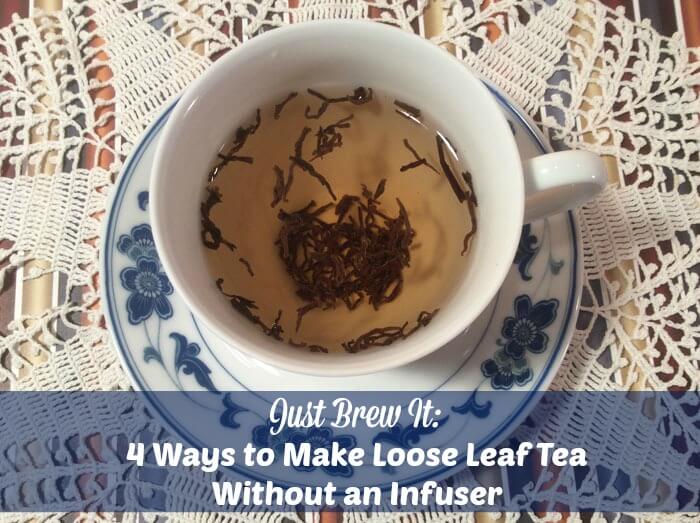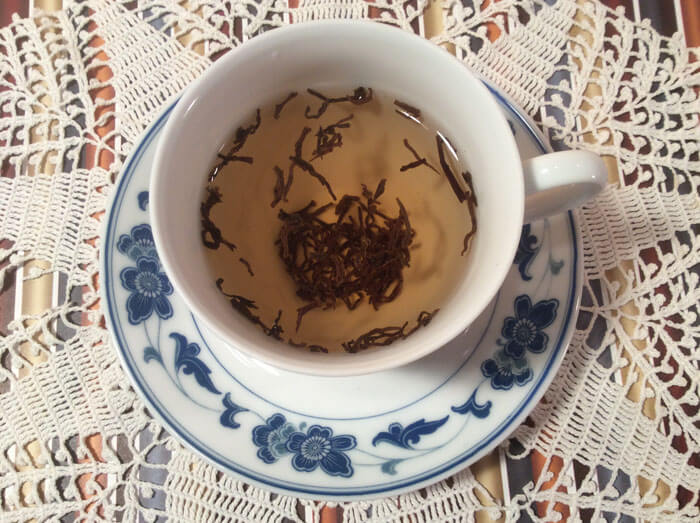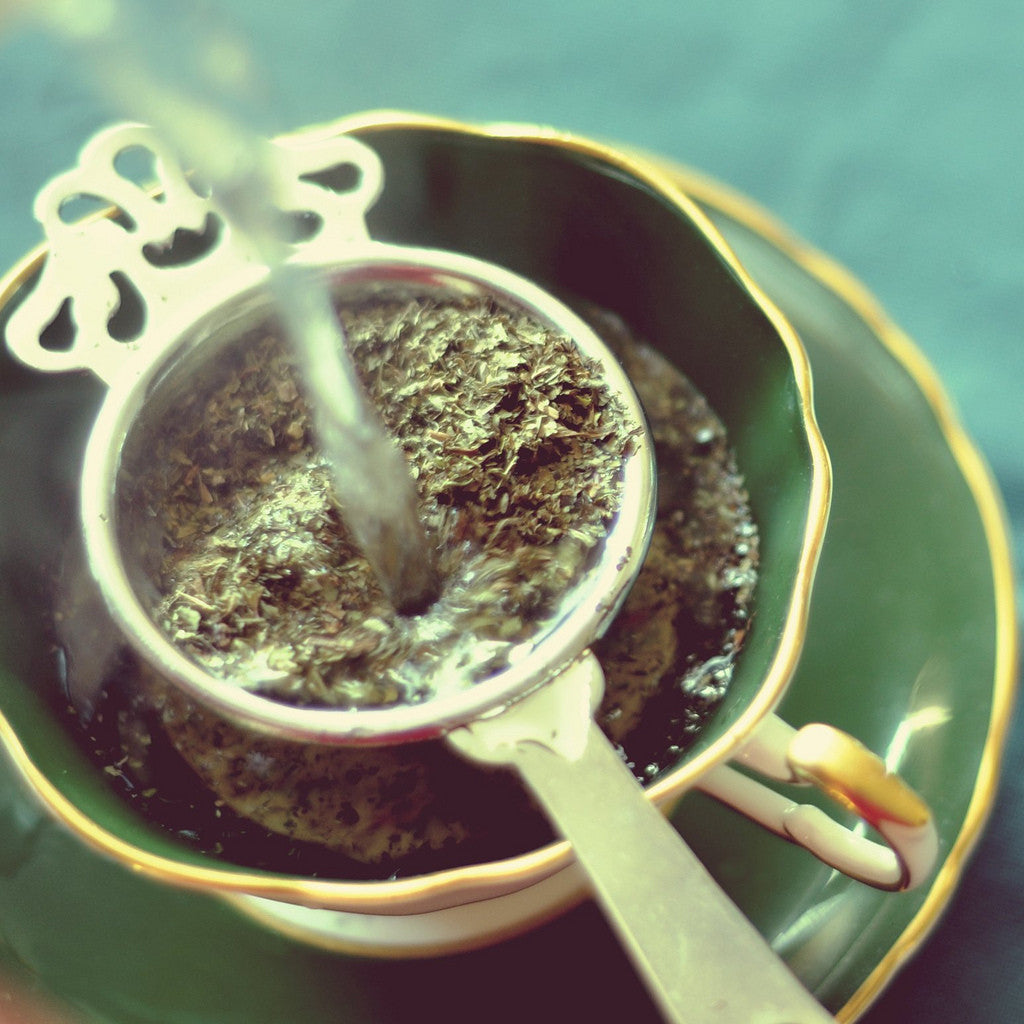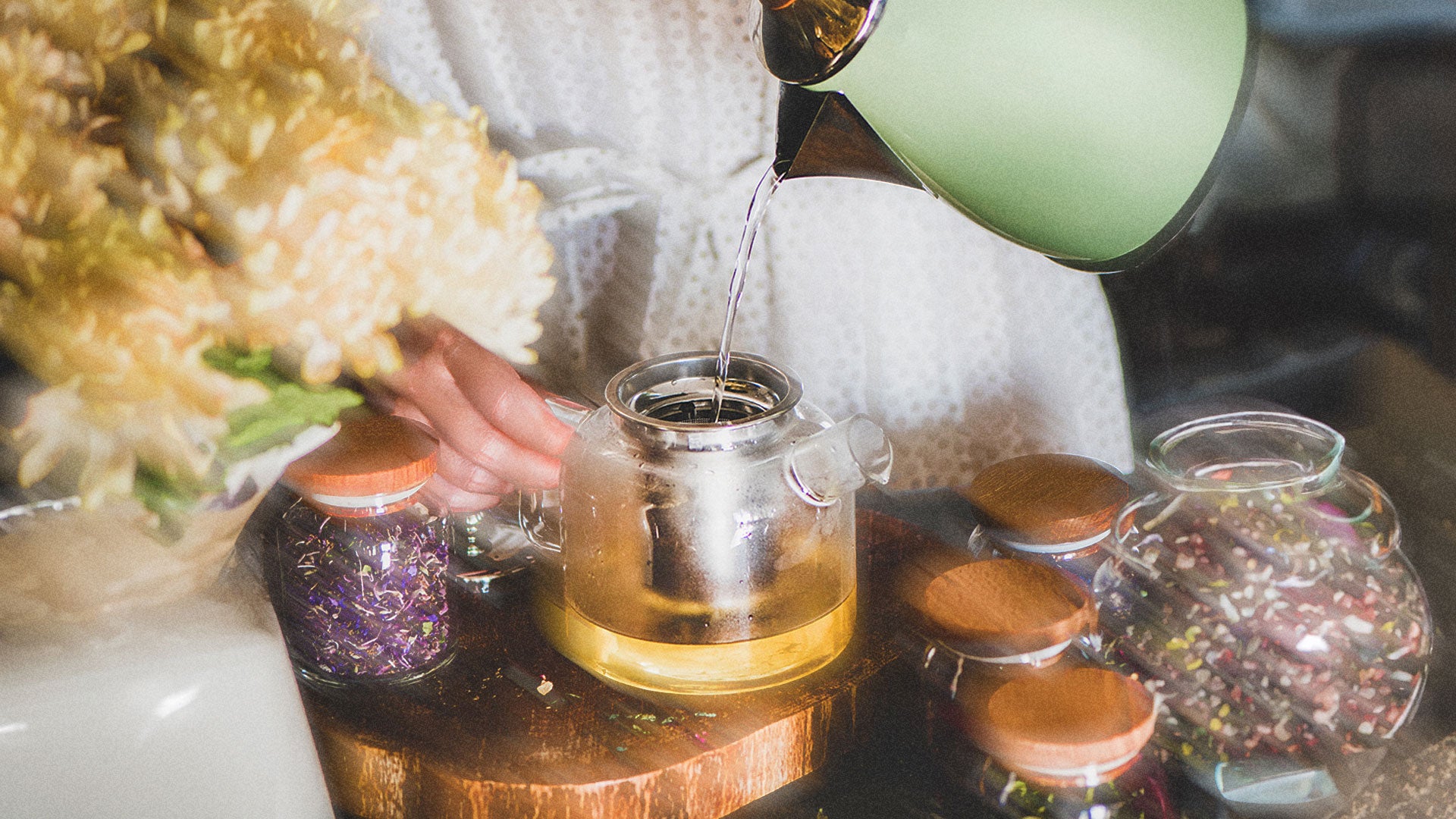Making tea without tea bags is simple and enjoyable. You just need loose tea leaves and a few basic tools.
Tea lovers often find that loose leaf tea provides richer flavors. Brewing tea without bags can be a fun and rewarding experience. With just a few easy steps, you can make a perfect cup of tea. This method allows you to control the strength and flavor of your tea.
Plus, it’s eco-friendly since it reduces waste. Ready to learn how to brew tea like a pro? Let’s dive into the steps to make delicious tea without using tea bags.

Credit: www.plumdeluxe.com
Choosing The Right Tea Leaves
Choosing the right tea leaves can enhance your tea experience. It is essential to know which type of tea leaves to select. This depends on your taste preferences and health benefits.
Tea leaves come in various forms. Loose leaf tea and bagged tea are the most common. In this section, we will explore loose leaf varieties and the difference between organic and non-organic tea leaves.
Loose Leaf Varieties
Loose leaf tea provides a richer and fresher taste. The leaves are larger and more intact. This allows the full flavor to develop. Some popular loose leaf varieties include green tea, black tea, white tea, and oolong tea.
Green tea is known for its fresh and grassy flavor. Black tea has a robust and bold taste. White tea offers a delicate and slightly sweet flavor. Oolong tea sits between green and black tea in taste and oxidation.
Organic Vs. Non-organic
Organic tea leaves are grown without synthetic pesticides or fertilizers. They are better for your health and the environment. Non-organic tea leaves may contain residues from chemicals used in farming.
Choosing organic tea ensures a cleaner and more natural tea experience. Look for certifications on the packaging to confirm the tea is organic. This small choice can make a big difference in your tea quality.
Essential Equipment
Making tea without tea bags can be a delightful experience. The process allows you to enjoy the full flavor of loose leaf tea. To get started, you need the right equipment. Let’s explore some essential tools for this method.
Tea Infusers
A tea infuser is a small device that holds loose tea leaves. It allows water to flow through the leaves while keeping them contained. This helps in achieving a clean cup of tea. Here are some common types of tea infusers:
- Ball Infusers: These are small metal balls with holes. They open up to hold the tea leaves.
- Basket Infusers: These are larger and fit over the rim of your cup. They allow more room for the leaves to expand.
- Silicone Infusers: These come in fun shapes and are easy to clean.
Teapots And Kettles
Teapots and kettles are vital for brewing tea. They come in various sizes and materials. Here’s what you need to know:
| Equipment | Description |
|---|---|
| Teapot | A teapot is used to brew and serve tea. It has a spout, handle, and lid. |
| Kettle | A kettle is used to boil water. Electric kettles are quick and convenient. Stovetop kettles are traditional. |
Choose a teapot with a built-in strainer for easy brewing. Ensure your kettle can heat water to the right temperature. Different teas need different temperatures. Green tea needs lower heat, while black tea needs boiling water.
Measuring Tea Leaves
Measuring tea leaves is crucial for brewing a perfect cup of tea without tea bags. The right amount of tea leaves ensures the desired flavor and strength. Follow these simple tips to measure your tea leaves accurately.
Ideal Tea To Water Ratio
The tea to water ratio is essential for the perfect brew. A general guideline is to use one teaspoon of tea leaves for every 8 ounces (1 cup) of water. This ratio works well for most types of tea.
Here is a quick reference:
| Tea Type | Tea Leaves (per 8 oz of water) |
|---|---|
| Green Tea | 1 teaspoon |
| Black Tea | 1 teaspoon |
| Oolong Tea | 1.5 teaspoons |
| Herbal Tea | 1 teaspoon |
Using A Tea Scale
For more precision, use a tea scale. A tea scale measures the exact weight of the tea leaves. This method is especially useful for premium teas.
Follow these steps:
- Place the empty container on the scale.
- Press “tare” to zero out the weight.
- Add the tea leaves until you reach the desired weight.
Using a scale ensures you have the right amount of tea leaves every time. This leads to a consistent and flavorful tea experience.

Credit: www.plumdeluxe.com
Water Quality And Temperature
Making tea without tea bags needs careful consideration of water quality and temperature. Good water and the right heat can enhance the flavor of your tea. Let’s explore how filtered water and optimal brewing temperatures can make a difference.
Filtered Water Benefits
Using filtered water can improve your tea’s taste. Tap water often contains minerals and chemicals. These can affect the tea’s flavor. Filtered water removes these impurities. This allows the tea’s true taste to shine through. It’s a simple step that makes a big difference.
Optimal Brewing Temperatures
Each type of tea has an ideal brewing temperature. Green tea needs lower temperatures, around 160-180°F. Black tea requires hotter water, about 200-212°F. Using the right temperature prevents bitterness. It also helps extract the best flavors. Using a thermometer can ensure accuracy.
Brewing Techniques
Brewing tea without tea bags is an art. It involves precision, patience, and the right techniques. This method can bring out the best flavors from your loose tea leaves. Let’s explore some effective brewing techniques to make a perfect cup of tea.
Steeping Times
Steeping times vary based on the type of tea. Follow these guidelines for the best results:
| Type of Tea | Steeping Time |
|---|---|
| Green Tea | 2-3 minutes |
| Black Tea | 3-5 minutes |
| Oolong Tea | 4-7 minutes |
| Herbal Tea | 5-7 minutes |
Stick to these times to avoid over-steeping. Over-steeping can make the tea bitter. Use a timer for accuracy. This ensures you get the best flavor.
Multiple Infusions
Many loose teas can be infused multiple times. This means you can use the same leaves more than once. Here’s a simple guide:
- For the first infusion, use the standard steeping time.
- For the second infusion, add one extra minute.
- For the third infusion, add another minute.
For example, if your first steeping time is 3 minutes, your second should be 4 minutes, and the third 5 minutes. Multiple infusions can reveal different flavor notes. This makes the tea experience richer and more varied.
Always use fresh, high-quality loose tea leaves. Poor quality leaves may not withstand multiple infusions. Enjoy your tea and experiment with these brewing techniques to find your perfect cup.
Enhancing Flavor
Learning how to make tea without tea bags opens up a world of flavor possibilities. By enhancing the flavor with various additions, you can create a tea that is uniquely yours. Below, we explore some methods to add that extra zing to your cup.
Adding Spices And Herbs
Spices and herbs can significantly enhance the flavor of your tea. They not only add depth but also bring out the natural flavors of the tea leaves.
- Cinnamon: Adds a warm and sweet flavor.
- Ginger: Provides a spicy kick and is great for digestion.
- Mint: Offers a refreshing taste and a cooling sensation.
- Cardamom: Adds a unique, aromatic flavor.
- Cloves: Introduces a strong, spicy note.
To add these spices, simply steep them with your tea leaves. For a more intense flavor, crush them slightly before adding.
Sweeteners And Milk Options
Sweeteners and milk can also play a big role in enhancing your tea’s flavor. They can balance out the bitterness of the tea leaves and add a creamy texture.
| Sweetener | Flavor Profile |
|---|---|
| Honey | Natural sweetness with floral notes. |
| Sugar | Pure sweetness, easily dissolves. |
| Agave Syrup | Light sweetness, dissolves well in cold tea. |
When it comes to milk options, you have several choices:
- Whole Milk: Adds richness and a creamy texture.
- Almond Milk: Offers a nutty flavor and is dairy-free.
- Coconut Milk: Adds a tropical twist and a creamy consistency.
Experiment with different combinations of spices, sweeteners, and milk to find your perfect cup of tea.
Serving And Presentation
Serving and Presentation play an essential role in enhancing your tea experience. The right cups, garnishes, and accompaniments add elegance to your tea ritual. Let’s dive into the details to make your tea time special.
Choosing The Right Cups
The type of cup you use can affect your tea’s taste and presentation. Porcelain cups are classic and retain heat well. Glass cups allow you to appreciate the tea’s color. For a traditional touch, use ceramic cups. Each type adds its own charm to the tea experience.
Garnishing And Accompaniments
Garnishing your tea can enhance its flavor and presentation. Here are some popular options:
- Lemon slices – Add a zesty twist.
- Mint leaves – Provide a refreshing aroma.
- Honey sticks – Sweeten your tea naturally.
Accompaniments can make tea time more enjoyable. Consider these classic options:
| Accompaniment | Description |
|---|---|
| Biscuits | Light and crispy, perfect for dipping. |
| Scones | Serve with clotted cream and jam. |
| Finger sandwiches | Small and savory, easy to eat. |
With the right cups, garnishes, and accompaniments, your tea experience will be delightful. Enjoy your tea with style and grace.

Credit: www.goldenmoontea.com
Storing Tea Leaves
Storing tea leaves properly ensures your tea remains fresh and flavorful. The right storage extends the shelf life and keeps the taste intact. Let’s explore the best practices for storing tea leaves.
Proper Storage Containers
Choosing the right container is essential. It keeps tea leaves fresh and aromatic. Use airtight containers made of non-reactive materials.
- Glass Jars: Ensure they have airtight lids.
- Metal Tins: Opt for tins with tight-fitting lids.
- Ceramic Containers: Keep tea safe from light and air.
Avoid storing tea leaves in plastic containers. They may absorb odors and affect the taste. Always keep containers in a cool, dark place.
Shelf Life And Freshness
Tea leaves have a limited shelf life. Different types of tea have varying shelf lives. Here’s a general guide:
| Type of Tea | Shelf Life |
|---|---|
| Green Tea | 6 to 12 months |
| Black Tea | 12 to 24 months |
| Oolong Tea | 12 to 24 months |
| White Tea | 12 to 24 months |
Always check the tea leaves for any signs of mold or stale smell. Fresh tea leaves have a strong, pleasant aroma.
To maintain freshness, keep tea leaves away from moisture, light, and strong odors. Use a dedicated scoop to avoid contaminating the leaves.
Enjoy your perfect cup of tea by storing tea leaves properly. Fresh leaves make all the difference!
Frequently Asked Questions
What Are Alternatives To Tea Bags?
Loose leaf tea, herbal infusions, and fresh herbs are great alternatives to tea bags. They offer a richer flavor and more health benefits.
How Do You Make Loose Leaf Tea?
Use a tea infuser or strainer for loose leaf tea. Steep the leaves in hot water for a few minutes.
Can You Make Tea With Fresh Herbs?
Yes, you can use fresh herbs like mint, basil, or rosemary. Steep them in hot water for a flavorful herbal tea.
What Are The Benefits Of Loose Leaf Tea?
Loose leaf tea often contains higher quality leaves. It offers a richer flavor and more antioxidants compared to tea bags.
Conclusion
Making tea without tea bags is simple and enjoyable. Just follow the steps carefully. Use loose tea leaves and boiling water. Let the tea steep for a few minutes. Strain the leaves and enjoy your fresh, flavorful tea. Experiment with different types of tea leaves.
You will discover new tastes and aromas. Crafting tea this way feels more personal. Plus, it’s eco-friendly. So, embrace this method for a delightful tea experience. Your taste buds will thank you.
